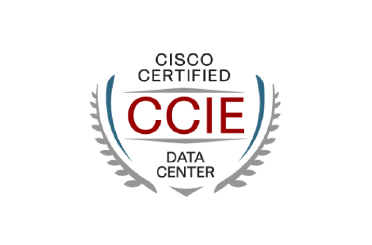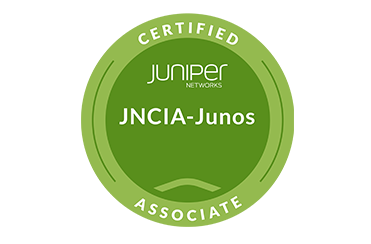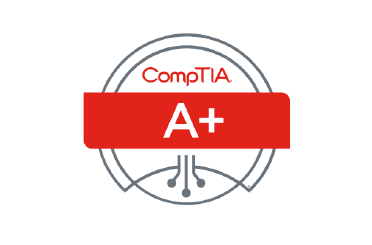VMware Certified Professional-Data Center Virtualization
The VCP-DCV 2021 certification validates candidate skills to implement, manage, and troubleshoot a VMware vSphere® 7 infrastructure, which includes VMware ESXi™ 7 and VMware vCenter Server® 7, using best practices to provide a powerful, flexible, and secure foundation for business agility that can accelerate the transformation to cloud computing.
Who should attend this training?
- System Administrators
- System Engineers
- ESXi and vCenter Server Operators
Benefits of VMware Certification
- Recognition of your technical knowledge and skills
- Greater opportunities for career advancement
- Official transcripts
- VMware Digital Badge*
- Use of the certification logo
- Access to the exclusive portal & logo merchandise store
- Invitation to beta exams and classes
- Discounts from VMware Press
- Discounted admission to VMware events
All Courses Idea
Course Objectives
By the end of the course, you should be able to meet the following objectives:
- Describe the software-defined data center (SDDC)
- Explain the vSphere components and their function in the infrastructure
- Describe the benefits and capabilities of VMware Skyline
- Install and configure ESXi hosts
- Deploy and configure VMware vCenter Server Appliance
- Use VMware vSphere Client to manage the vCenter Server inventory and the vCenter Server configuration
- Manage, monitor, back up, and protect vCenter Server Appliance
- Create virtual networks with vSphere standard switches
- Describe the storage technologies supported by vSphere
- Configure virtual storage using iSCSI and NFS storage
- Create and manage VMware vSphere VMFS datastores
- Use the vSphere Client to create virtual machines, templates, clones, and snapshots
- Create a content library and deploy virtual machines from templates in the library
- Manage virtual machine resource use
- Migrate virtual machines with VMware vSphere vMotion and VMware vSphere Storage vMotion
- Create and manage a vSphere cluster that is enabled with VMware vSphere High Availability and VMware vSphere Distributed Resource Scheduler
- Discuss solutions for managing the vSphere life cycle
- Use VMware vSphere Lifecycle Manager to perform upgrades to ESXi hosts and virtual machines
Course Outline
1 Course Introduction
- Introductions and course logistics
- Course objectives
2 Introduction to vSphere and the Software-Defined Data Center
- Explain basic virtualization concepts
- Describe how vSphere fits into the software-defined data center and the cloud infrastructure
- Explain how vSphere interacts with CPUs, memory, networks, and storage
- Recognize the user interfaces for accessing the vCenter Server system and ESXi hosts
- Describe the ESXi host architecture
- Navigate the Direct Console User Interface (DCUI) to configure an ESXi host
- Recognize ESXi host user account best practices
- Install an ESXi host
- Use VMware Host Client to configure ESXi host settings
- Describe how to proactively manage your vSphere environment using VMware Skyline
3 Virtual Machines
- Create and provision a virtual machine
- Explain the importance of VMware Tools
- Install VMware Tools
- Identify the files that make up a VM
- Recognize the components of a VM
- Recognize virtual devices supported by a VM
- Describe the benefits and use cases for containers
- Identify the parts of a container system
4 vCenter Server
- Describe the vCenter Server architecture
- Discuss how ESXi hosts communicate with vCenter Server
- Deploy and configure vCenter Server Appliance
- Use vSphere Client to manage the vCenter Server inventory
- Add data center, organizational objects, and hosts to vCenter Server
- Use roles and permissions to enable users to access objects in the vCenter Server inventory
- Back up vCenter Server Appliance
- Monitor vCenter Server tasks, events, and appliance health
- Use VMware vCenter Server High Availability to protect a vCenter Server Appliance
5 Configuring and Managing Virtual Networks
- Create and manage standard switches
- Describe the virtual switch connection types
- Configure virtual switch security, traffic-shaping, and load-balancing policies
- Compare vSphere distributed switches and standard switches
6 Configuring and Managing Virtual Storage
- Identify storage protocols and storage device types
- Discuss ESXi hosts using iSCSI, NFS, and Fibre Channel storage
- Create and manage VMFS and NFS datastores
- Explain how multipathing works with iSCSI, NFS, and Fibre Channel storage
- Recognize the components of a VMware vSAN configuration
7 Virtual Machine Management
- Use templates and cloning to deploy new virtual machines
- Modify and manage virtual machines
- Create a content library and deploy virtual machines from templates in the library
- Use customization specification files to customize a new virtual machine
- Perform vSphere vMotion and vSphere Storage vMotion migrations
- Describe the Enhanced vMotion Compatibility feature
- Create and manage virtual machine snapshots
- Examine the features and functions of VMware vSphere Replication
- Describe the benefits of VMware vSphere Storage APIs – Data Protection
8 Resource Management and Monitoring
- Discuss CPU and memory concepts in a virtualized environment
- Describe what overcommitment of a resource means
- Describe methods for optimizing CPU and memory usage
- Use various tools to monitor resource use
- Create and use alarms to report certain conditions or events
9 vSphere Clusters
- Describe the functions of a vSphere DRS cluster
- Create a vSphere DRS cluster
- Monitor a vSphere cluster configuration
- Describe options for making a vSphere environment highly available
- Explain the vSphere HA architecture
- Configure and manage a vSphere HA cluster
- Examine the features and functions of VMware vSphere Fault Tolerance
- Describe the function of the vSphere Cluster Service
10 vSphere Lifecycle Management
- Recognize the importance of vCenter Server Update Planner
- Describe how VMware vSphere Lifecycle Manager works
- Describe how to update ESXi hosts using baselines
- Validate ESXi host compliance using a cluster image
- Describe how to upgrade VMware Tools and VM hardware
- Describe VMware vSphere Lifecycle Manager and VMware vSAN integration
Certifications
Attending this course meets the training required to achieve the following certification:
VMware Certified Professional - Data Center Virtualization 2021 (VCP-DCV 2021)
|
Course# |
Name |
Exam# |
Duration (Hours) |
|---|---|---|---|
|
VCP-DCV 2021 |
VMware vSphere: Install, Configure, Manage (V7) |
2V0-21.20 |
60 |
This course has the following prerequisites:
System administration experience on Microsoft Windows Server 2016 or Linux Administration.
Data Center Virtualization solutions are frequently updated. Having a year as its certification version allows VMware to better maintain the exam and training content, and more importantly, provides certification candidates to communicate how current their skills are in relation to other certifications.
Yes, by passing the VCP-DCV 2020 exam you will successfully re-certify.
• A single source that combines your credentials and provides a complete overview of your skills. • Digital badges allow for you to easily share your accomplishments in social media. • Provides employers with easy, valid verification of your VMware credentials.
If you have completed 2V0-622 VCP6.5-DCV exam on or after 16, January 2019, then you are eligible to attend vSphere 6.7 version course and vSphere 6.7 Foundation exam to fulfill the requirements towards VCP-DCV 2020 certification track.









































